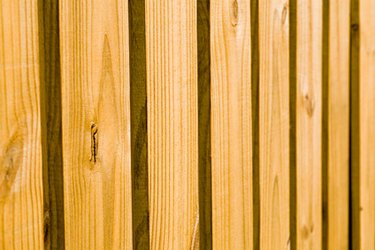
Cladding is the practice of overlaying the external walls of a building with another material. Timber is a common cladding material, as it provides very attractive aesthetics. However, there are a number of disadvantages to timber cladding, and it is important to investigate all materials before making a choice.
Painting
Video of the Day
Timber cladding requires regular painting or staining to preserve its natural beauty and protect it from the elements. Depending upon a number of factors, such as the environment or the quality of the previous paint job, the Life 123 website states you may need to paint your cladding as often as every 3 to 5 years.
Video of the Day
Fire Risk
Even if timber cladding is painted or sealed, it still carries a risk of spreading fire, as it is a flammable material. Therefore, you may find that insurance companies charge increased premiums due to this risk.
Exposure to Elements
Timber is a natural material, and as such is subject to a loss of quality or damage after being exposed to the elements for a long time. Timber can warp, crack or fade over time, especially if it has not been installed properly to begin with. This can result in costly repair bills.